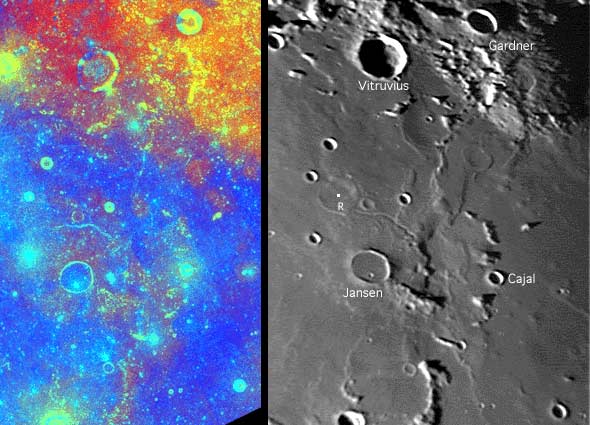Difference between revisions of "December 6, 2004"
| Line 12: | Line 12: | ||
</table> | </table> | ||
<table width="80%" border="0" align="center" cellpadding="8"> | <table width="80%" border="0" align="center" cellpadding="8"> | ||
| − | <tr><td><div align="center" class="main_sm">Image Credit: [http://pdsmaps.wr.usgs.gov/PDS/public/explorer/html/mooneasy.htm USGS Map-A-Planet] and [mailto:kcpaulhk@yahoo.com.hk | + | <tr><td><div align="center" class="main_sm"><p>Image Credit: [http://pdsmaps.wr.usgs.gov/PDS/public/explorer/html/mooneasy.htm USGS Map-A-Planet] and [mailto:kcpaulhk@yahoo.com.hk |
KC Pau] | KC Pau] | ||
</div></td> | </div></td> | ||
| Line 23: | Line 23: | ||
</p> | </p> | ||
<blockquote> | <blockquote> | ||
| − | <p align="right">— [mailto:tychocrater@yahoo.com Chuck Wood]</blockquote> | + | <p align="right">— [mailto:tychocrater@yahoo.com Chuck Wood]</p></blockquote> |
<p align="left"><b>Technical Details:</b><br> | <p align="left"><b>Technical Details:</b><br> | ||
Left: Clementine color-ratio composite; Red=750 nm/415 nm, Green=750 nm/950 nm, Blue=414 nm/750 nm . Right: 250mm f/6 Newtonian and webcam</p> | Left: Clementine color-ratio composite; Red=750 nm/415 nm, Green=750 nm/950 nm, Blue=414 nm/750 nm . Right: 250mm f/6 Newtonian and webcam</p> | ||
| Line 29: | Line 29: | ||
Hiesinger and others (2000) Ages of Mare Basalts on the Lunar Nearside. <i>Journal of Geophysical Research 105, </i>E12. pp 29,239-29,275. | Hiesinger and others (2000) Ages of Mare Basalts on the Lunar Nearside. <i>Journal of Geophysical Research 105, </i>E12. pp 29,239-29,275. | ||
<br>Rukl <i>Atlas of the Moon,</i> Sheets 25 & 26 | <br>Rukl <i>Atlas of the Moon,</i> Sheets 25 & 26 | ||
| + | </p> | ||
<p align="left"><b>Tomorrow's LPOD: </b> Up Close With Proclus</p> | <p align="left"><b>Tomorrow's LPOD: </b> Up Close With Proclus</p> | ||
</tr> | </tr> | ||
Revision as of 20:08, 17 January 2015
Seeing Red, and Blue and Yellow
Image Credit: USGS Map-A-Planet and [mailto:kcpaulhk@yahoo.com.hk KC Pau] |
|
Seeing Red, and Blue and Yellow In a posting yesterday, Danny Caes mentioned the USGS Map-A-Planet (MAP) online software, and I realized that that powerful capability should be more widely promoted. So, delaying the promised "Up Close with Proclus" LPOD another day, here is the Clementine multi-spectral view of the fascinating area described in yesterday's LPOD. It took only a minute or two to construct this color image using MAP - and then I rotated the image to approximate the areal coverage of KC's image - I didn't correct for look angle or libration so there are still differences, but the correspondence between images is excellent. As with most Clementine false color images, color ratios of various bands in the UV-visible wavelengths are used to derive the displayed colors. Reds are highland material (mostly anorthosites), maria basaltic lavas are yellow/orange (low titanium) or blue (higher titanium), and young crater interiors and rays are bright - blue if formed in mare and yellow if in highlands. The color image shows that the high ground of the Lamont-Gardner Megadome Alignment is red (lo-Ti) basalts which are surrounded by and embayed by blue (hi-Ti) basalts. Crater counts by Hiesinger and others yield ages of 3.75 b.y. for the red lavas and 3.57 b.y. for the brighter blue ones. Jansen is filled with the younger basalt, as was suggested yesterday, and a faint blue wedge extending from the notch in Jansen's west wall suggests that some lava from the crater did empty onto the mare. If the Gardner Megadome is a volcanic structure, as speculated yesterday, its yellow-orange color shows that it is not made of mare material. So either it is an unknown type of highlands volcanic rock or its not volcanic at all. See how the interpretation from yesterday has deeped with this new data? I encourage you to compare normal images of your favorite lunar features with Clementine color mosaics and Lunar Orbiter IV views, and if you add in the unit ages, you will have all you need to write your own history of a patch of the Moon! Technical Details: Related Links: Tomorrow's LPOD: Up Close With Proclus |
|
Author & Editor: Technical Consultant: Contact Translator: A service of: |
COMMENTS?
Register, and click on the Discussion tab at the top of the page.




